Septic Tank Problems Norfolk
Septic tanks in Norfolk can be in the form of a traditionally built tank from either brick or concrete, or in the form of a prefabricated tank. Problems can be experienced with all types of septic tank and all septic tanks are designed to promote the growth of anaerobic micro-organisms which partially degrade the receiving wastewater. The majority of problems associated with septic tanks in Norfolk can be overcome by installing a Mantair conversion unit within the existing septic tank, or by replacing the existing tank with a packaged sewage treatment plant.
Norfolk septic tank odours The process within a septic tank is called ‘anaerobic digestion’ which reduces the sludge volume. During the digestion process methane, hydrogen sulphide and other gases are produced and these gases can in some cases cause a serious odour nuisance. Septic tanks should be correctly vented to allow the noxious gases to escape to the atmosphere. Norfolk septic tank pollution The effluent from a septic tank is disposed of to a soakaway. Under no circumstances should it be allowed to discharge to a ditch or stream. Such a discharge is an offence under the Public Health and Water Resources Acts and renders the offender liable to prosecution by the Statutory Authorities. In many parts of the UK it is common to find older septic tanks discharging direct to ditches and streams. This is mainly due to septic tanks being installed in areas where the ground conditions do not favour a soakaway system, and as a result the original soakaway has been extended to a nearby ditch. No matter how long a septic tank has been discharging to a ditch or stream, it is still an offence. Any discharge to a ditch or stream requires either a Permit or Exemption Certificate from the Environment Agency. With both of these Environment Agency Certifications the effluent would need to be treated to a degree which exceeds the quality of effluent discharged from a septic tank and therefore the septic tank would need to be upgraded or replaced. Septic tanks can be upgraded into sewage treatment plants by installing a Mantair system which complies with all the requirements of an Environment Agency Permit. Read more Norfolk septic tank issues - flooding There are many reasons which may cause a septic tank to flood and these can range from something as a simple as an outlet ‘dip pipe’ being blocked to more serious problems involving the receiving soakaway system.
The most common cause for a septic tank flooding is due to the receiving soakaway and not the septic tank. If a soakaway fails and prevents the effluent from percolating through the ground this will result in the soakaway, septic tank and the foul drainage pipe work flooding. Septic tank soakaways can fail for a number of reasons and these include:
Ground Conditions The soakaway being constructed in ground conditions which are non-permeable such as sandy clay, silt clay and clay. This would result in the effluent that discharges to the soakaway filling the soakaway and subsequent flooding of the septic tank, or potentially effluent bursting out of the ground causing a health hazard. It is important that the percolation characteristics of the ground are suitable in both summer and winter months. To identify whether the ground conditions are suitable for a soakaway and to determine the size of soakaway required it is necessary to conduct a Percolation Test. Without the results of a Percolation Test there is no way of knowing the size of soakaway required or if a soakaway would indeed work. Natural Water Table The soakaway being under the natural water table. This can often be the cause for septic tank soakaway systems failing during winter months only. When a soakaway is operating underneath the natural water table the septic tank, soakaway and foul drainage pipework will be at the same level as the surrounding water table and as a result the flooding within the system can be moderate or severe. Problems with septic tank systems operating in high water table areas can be overcome by installing a Mantair septic tank conversion system. Root Ingress The soakaway being constructed in close proximity to trees and shrubs. Roots of trees and shrubs planted too close to a soakaway can enter the soakaway pipe work and block the pipes. Root ingress into soakaways is the cause of many soakaways blocking and as a result flooding of the septic tank system. As a minimum, removal of the trees and shrubs is required, and clearing the soakaway pipes of the roots. In some cases it wold be necessary to construct a new soakaway system in an area free of plant roots. Physical Damage Physical damage to the soakaway pipe work. In some cases a septic tank can flood due to the receiving soakaway pipe work becoming damaged and broken. This can often be due to heavy machinery moving over the soakaway and crushing the pipes. Older ‘but-jointing’ soakaway systems were constructed using clay wear pipes. It is common for these clay wear pipes to become dislodged, resulting in soil entering the pipe work and blocking the soakaway. Increase in Flow Additional wastewater entering the septic tank. A septic tank and the receiving soakaway are designed to cater for a certain volume of flow per day. If the flow being discharged to a septic tank increases and the tank is not designed for this additional flow then problems can be experienced with both the septic tank and soakaway system. Sodium Binding Excessive use of detergent based products i.e. dishwasher tablets, washing powders etc. will lead to eventual failure of the soakaway. This is caused by a process called sodium binding where the sodium present in detergents cause any silt or clay particles in the sub soil to bind together to form am impervious layer. The same effect occurs if a water softener is present as the softened water will have relatively high sodium content. Age of the Soakaway Older soakaways can fail due to a build-up of sludge solids. The level of sludge solids passing through the septic tank are due to a number of reasons, including size of the tank, nature of the wastewater and emptying frequency. Suffolk septic tank failure There are various reasons why tanks fail and some of the most common causes are as follows: P Within most prefabricated septic tanks are internal baffles or cones which are designed to prevent solids and floating material from passing through the tank. In some instances baffles and cones can collapse resulting in solids and floating material passing through the tank and into the soakaway network. Prefabricated tanks can also implode if they are not installed using the correct backfill material. If these tanks are not backfilled with concrete this can result in flotation of the tank especially when a tank is emptied during wet weather periods. Traditionally Built Tanks One of the most common failures on traditionally built septic tanks is when the dip pipes fall away from the inlet or outlet pipes. This often due to sulphate corrosion. Concrete septic tanks can crack and leak allowing ground water ingress. Concrete cover slabs can deteriorate and also crack with the potential to collapse. The mortar joints on brick tanks can suffer from sulphate corrosion. Sulphate attack on mortar joints happens when the soluble sulphate salts within some clay bricks react with cement within mortar. The result of this reaction is the formation of Calcium Sulfoaluminate, a crystal which expands during its formation and causes cracking in mortar joints. The resulting mortar joints can become porous allowing ground water ingress into the tank and alter the structural integrity of the tank. Septic tanks should be water tight. If ground or surface waters enter into a tank this can result in flooding and failing of the soakaway. Excessive water ingress into a septic tank would result in sludge solids passing through the tank and into the soakaway, resulting in failure of the soakaway. Potential issues for Septic Tanks
Septic tank issues - Failure Signs
Septic tank solutions As detailed throughout this page, there are various reasons for septic tank problems. The solution will depend on a number of factors and it is advisable that professional advice is sought prior to any remedial works taking place.
The Environment Agency recognises the Mantair unit as a sewage treatment system and provides Permit Certificates approving the discharge from these systems direct to ditches and streams, thus removing the need for a soakaway network. All Mantair units are designed to ensure that the completed installation complies with the requirements of the Environment Agency and Building Regulations.
For further information on the Mantair conversion units, click here
Add-On septic tank conversion units
Designed to treat the overflow from a septic tank in a separate treatment stage involving the installation of an additional tank, the aim of these systems is to significantly improve the effluent quality which is discharged. These septic tank upgrade systems are connected to the outlet of the septic tank which allows the wastewater to easily flow into the treatment tank for further treatment. After treatment the wastewater can enter into either a percolation area / soakaway – or directly to a water course.
If you require further information or advice on septic tank systems click here or call Mantair Limited
Click here for a septic tank installation in Norfolk. Click here for a sewage treatment plant installation in Suffolk.
✆ 0800 121 6786 01255 476 467
Our sewage treatment and drainage engineers operate throughout Norfolk, including Acle, Attleborough, Aylsham, Caister on Sea, Cromer, Dereham, Diss, Downham Market, Fakenham, Great Yarmouth, Holt, Hunstanton, Kings Lynn, North Walsham, Norwich, Rackheath, Harleston, Reepham, Sheringham, Swaffham, Thetford, Watton, Wells next the Sea, Wroxham, Wymondham.
© Mantair Limited 2011 |

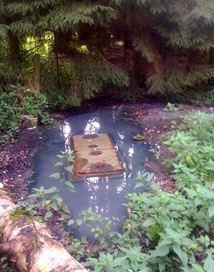

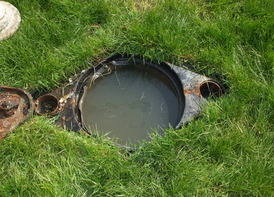 The effluent level inside a septic tank should be at the level of the outlet pipe. In some instances either the inlet or outlet pipes for a septic tank can become blocked with materials such as fat or tissue. If the inlet ‘dip pipe’ becomes blocked this would result in the foul drainage to the tank flooding, and this is more common in older traditionally built septic tanks. If the outlet ‘dip pipe’ becomes blocked this would result in both the septic tank and incoming foul drainage pipe work flooding. In some cases it is only necessary to clear the blockage with drainage rods.
The effluent level inside a septic tank should be at the level of the outlet pipe. In some instances either the inlet or outlet pipes for a septic tank can become blocked with materials such as fat or tissue. If the inlet ‘dip pipe’ becomes blocked this would result in the foul drainage to the tank flooding, and this is more common in older traditionally built septic tanks. If the outlet ‘dip pipe’ becomes blocked this would result in both the septic tank and incoming foul drainage pipe work flooding. In some cases it is only necessary to clear the blockage with drainage rods.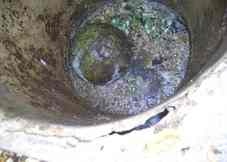 refabricated Septic Tanks
refabricated Septic Tanks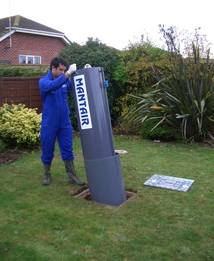 The majority of septic tank problems can be overcome by installing a
The majority of septic tank problems can be overcome by installing a 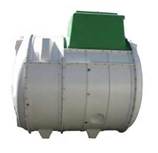 These sewage treatment systems are an ideal solution to septic tank problems where the existing tank is not suitable for the installation of a Mantair septic tank conversion unit.
These sewage treatment systems are an ideal solution to septic tank problems where the existing tank is not suitable for the installation of a Mantair septic tank conversion unit.